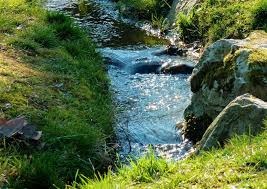This is a new way of cleaning toxic waste through the use of bacteria found within nature so as to convert the toxic substances to much safer substances. In some instances, bacteria can be engineered genetically to terminate the toxic waste. Normally the bacteria is sprayed onto toxic chemicals on some ground surface, on in some circumstances the bacteria is released via a well into an aquifer. The bacteria is then spread and where they find any toxic substances, they consume or break them down into less toxic substances. As they consume, they equally reproduce in several numbers implying that the more the bacteria the faster and quicker the waste are cleaned up.
Pros
This is a natural procedure and hence perceived by many as an environmentally friendly way for waste treatment for materials that are contaminated like soil. Microbes that have the ability to degrade the contaminant multiplies in the presence of the contaminant, on the other hand, when the contaminant is degraded, it declines the bio-degrative population. The treatment residue are normally harmless and include water, carbon dioxide and biomass.
Hypothetically, bioremediation is necessary for the comprehensive destruction of various contaminants. Several compounds that are considered legally as hazardous can be altered into harmless substances. This does away the possibility of liability with regard to the treatment and disposal of contaminants within environmental mediums, for instance from air to land, the comprehensive destruction of target pollutants is a reality.
Furthermore, bioremediation can be undertaken on site without creating any major interruptions to common activities. It also eliminates the transportation of large waste quantities out of site and possible threats to human health as well as the environment which could result from transportation. Bioremediation is also less expensive as opposed to other technologies that are currently in use to treat hazardous waste.
Cons
Despite the fact that bioremediation offers a lot of hopes for the future, it could also be perceived as a challenging since while additives are used to promote the functioning of one specific bacterium, microorganisms of fungi, it might disrupt other organisms that reside within same environments. Even where such genetically altered organisms are released into an environment after some period, it becomes challenging to remove them. The process is also costly, time consuming and labour intensive to remediation to realize accepted standards. Another challenge regarding bioremediation in situ and ex situ process is that it can result in more damage than could have been caused by the pollution itself.
Bioremediation is also restricted to specific compounds that are biodegradable and all compounds are also not inclined to complete and rapid degradation. Some issues have arose that the outcome of degradation might be much toxic or persistent than the parent compound. In addition, most biological procedures are usually particular. Critical site factors needed for success include, favourable environmental growth conditions, presence of metabolically active microbial substances and suitable levels of contaminants and nutrients. It is also not easy to extrapolate from pilot scale or bench studies to full scale operations in the field.




